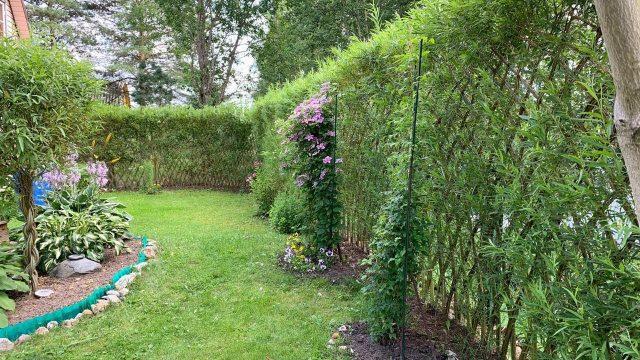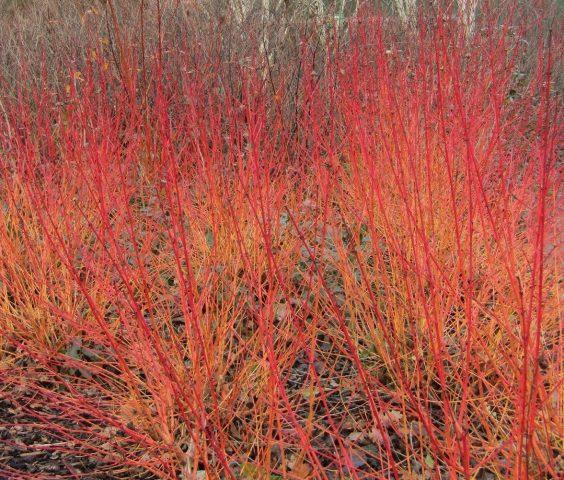Content
Until recently, willow was rarely used in landscape design because, as the tree grows, it takes up a lot of space, which is not always appropriate. But everything changed after low-growing and dwarf varieties of the crop were bred, capable of looking organic even in a small garden plot. This contributed to the growing popularity of willow as an element of gardening and landscape designs. But before using this tree for decorative purposes, you need to familiarize yourself with the recommendations for its use.

There are about 170 species of willow in nature, most of them are suitable for landscape design
Selecting a type and variety
This culture is represented by very diverse forms, namely trees, shrubs, multi-meter giants, and dwarfs. Moreover, among them there are species with creeping, drooping and upright growing shoots. This allows you to choose the most suitable willow option for landscape design, taking into account the size and location of the site.
Basic classification of crop types:
- Tall. The height of trees can reach 40 m. The species are used for landscaping urban recreation areas, parks, botanical gardens, and landscaping areas near ponds. The most common tall species is white willow or willow.A young tree has a silvery foliage color, but as it matures it changes to emerald green with a grayish tint. The height of the willow reaches 25 m. The flowers are yellow.
The lifespan of willow reaches one century
- Medium height. Such species are mostly common in the southern regions, as they are characterized by low frost resistance. The height of medium-sized willows reaches 15 m. The most common of them is Babylonian, whose homeland is considered to be China. Its distinctive feature is its drooping shoots with long, thin, pointed leaves, which increases its attractiveness for landscape design. The plates are green on top and bluish on the back.
Babylon willow is characterized by an accelerated growth rate
- Short. These species are ideal for landscape design. Their height does not exceed 8 m. Moreover, they can have different natural forms, which include standard types. The most common low-growing willow is the holly willow. It has one trunk and an oval crown.
Holly willow has twisty shoots
Thanks to selection, the distribution area of this deciduous tree has greatly expanded. This became possible due to the increase in their frost resistance and decorativeness.
Varieties of willow that are used in landscape design:
- Hakuro Nishiki. A shrubby form of the crop, up to 3 m high, native to Japan. The leaves of young seedlings have a pinkish tint, which increases the decorative value of the willow. The variety is often used to create a standard look. Flowering occurs at the end of May and lasts two weeks. The leaves bloom at the end.The annual growth of the variety is 50 cm. Hakuro-Nishiki tolerates waterlogging well, but reacts negatively to drought. When growing the variety in the northern regions, shelter for the winter is necessary.
Hakuro-Nishiki quickly recovers when shoots freeze
- Nana. A variety of purple willow for landscape design, characterized by compactness and grace. The height of the tree reaches 1.5 m. The shoots are thin, brownish-red in color. The natural form is a shrub with a dense hemispherical crown. The leaves are small, lanceolate, greenish-silver in color. Earring flowers of a purple hue appear before the foliage blooms in late April, early May.
Nana can grow in sun and partial shade
- Nitida. A dwarf, ground-creeping variety for landscape design. As it grows, this decorative willow forms a thick green cushion. Its height reaches 50 cm, and the diameter of the crown is 1.5 m. The leaves of the Nitida willow are pubescent, oval in shape, greenish-silver in color. Catkins are yellow, bloom abundantly until the leaves bloom.
Nitida is used to fill space in multi-level compositions
- Flame. Hybrid form of culture for landscape design. It is a shrub up to 4 m in height and diameter. Its young shoots are of a bright red, almost orange hue, which persists throughout the year. The leaves are narrow, dark green, and by autumn they become yellow. Flame does not form earrings. This willow for landscape design prefers sunny areas and is highly frost-resistant.
Flame is suitable for single and group plantings
- Mount Aso. A Japanese variety of shrubby willow, the height of which reaches 1.5 m.The crown of the tree is flat-round, consisting of vertically growing straight shoots. Lanceolate leaves are bluish-gray-green. Men's earrings are pinkish-red fluffy, and later turn silvery-yellow. Flowering occurs before the leaves bloom and lasts about ten days.
Mount Aso was named after an active volcano
The use of willow in landscape design
The widespread use of willow in landscape design, as seen in the photo, is explained by its flexibility of use. The tree is ideal for use in group compositions, creating hedges, and also as a topiary form. To prevent this tree from causing too much trouble in the future, it is necessary to select varieties taking into account the climate of the growing region.
Willow hedge
The dense crown and accelerated growth rate of willow allows it to be used to create hedges in landscape design. In this case, preference should be given to bushy, medium-sized varieties of the crop. And dwarf willows are suitable for framing paths on a site or delineating individual recreation areas.
The ideal option is a willow trellis fence. To do this, it is necessary to plant rooted cuttings or annual seedlings in rows at a distance of 20-25 cm. Moreover, the plants need to be planted at an angle of 45 degrees relative to each other, which will allow them to intertwine with each other and form a diamond-shaped pattern.
In places where shoots of different seedlings come into contact, you need to damage the bark with a sharp knife and secure the branches. This will allow them to grow together over time and ensure high strength of the fence.As the seedlings grow, it is necessary to regularly intertwine their shoots. It is also necessary to periodically trim the hedge on both sides so that its width does not exceed 30 cm.

A living trellis from this crop needs support
When using willow in the landscape of a site to frame paths and flower beds, it is recommended to place seedlings in a checkerboard pattern. This helps to create a voluminous, beautiful planting that will become a real decoration of the site. Borders of dwarf or miniature species require regular corrective pruning to maintain the desired crown shape.
Creating compositions
You can use willow in the garden for any landscape design and as part of compositions. The culture is ideal as an element of a shady alley. In this case, the seedlings need to be planted along the path at a distance of 2 m. Within three years, their crowns will close together and form a dome similar to an umbrella.
Standard species of willow are especially popular among gardeners for creating landscape design. They take years to form, but the result is worth it. To do this, after planting the seedling, it is necessary to isolate the main shoot and remove the rest. When the length of the trunk reaches the required height, the lateral shoots in its upper part in the spring need to be shortened by 1/3 of the length. And in the fall, form the crown of the tree in the form of a ball. In the future, it is recommended to only periodically carry out corrective pruning.
Using standard species of willow you can make a gazebo or arch. They also allow you to create a green fountain.To do this, you will need to plant three seedlings nearby, make a stone frame around the boundaries of the composition, and fill the soil inside with pebbles or plant with ground cover plants.
Globular species of willow are recommended for creating topiary, framing children's playgrounds, and decorating rockeries.
Site design ideas
There are many options for using willow in landscape design. To understand how versatile this tree is, you should consider some of them.

This gazebo can become an alternative to a wooden structure

The standard willow looks great against the background of a green lawn

Such trees can become a real decoration of any garden.

Using curly pruning, you can create unique topiaries on your site
Conclusion
Willow in landscape design allows you to give free rein to your imagination. After all, this crop is distinguished not only by the flexibility of its shoots, rapid growth and dense crown, but is also capable of fully developing regardless of the composition of the soil. However, regular watering and the absence of stagnation of moisture in the soil are important for it. If these conditions are met, it will be able to delight with its spectacular appearance throughout the entire season for many years and look original in any landscape design.
















